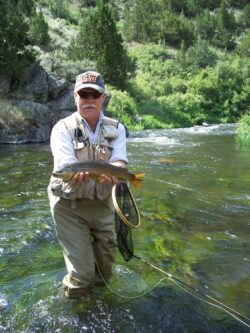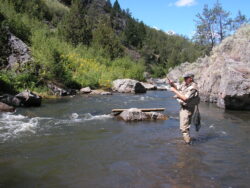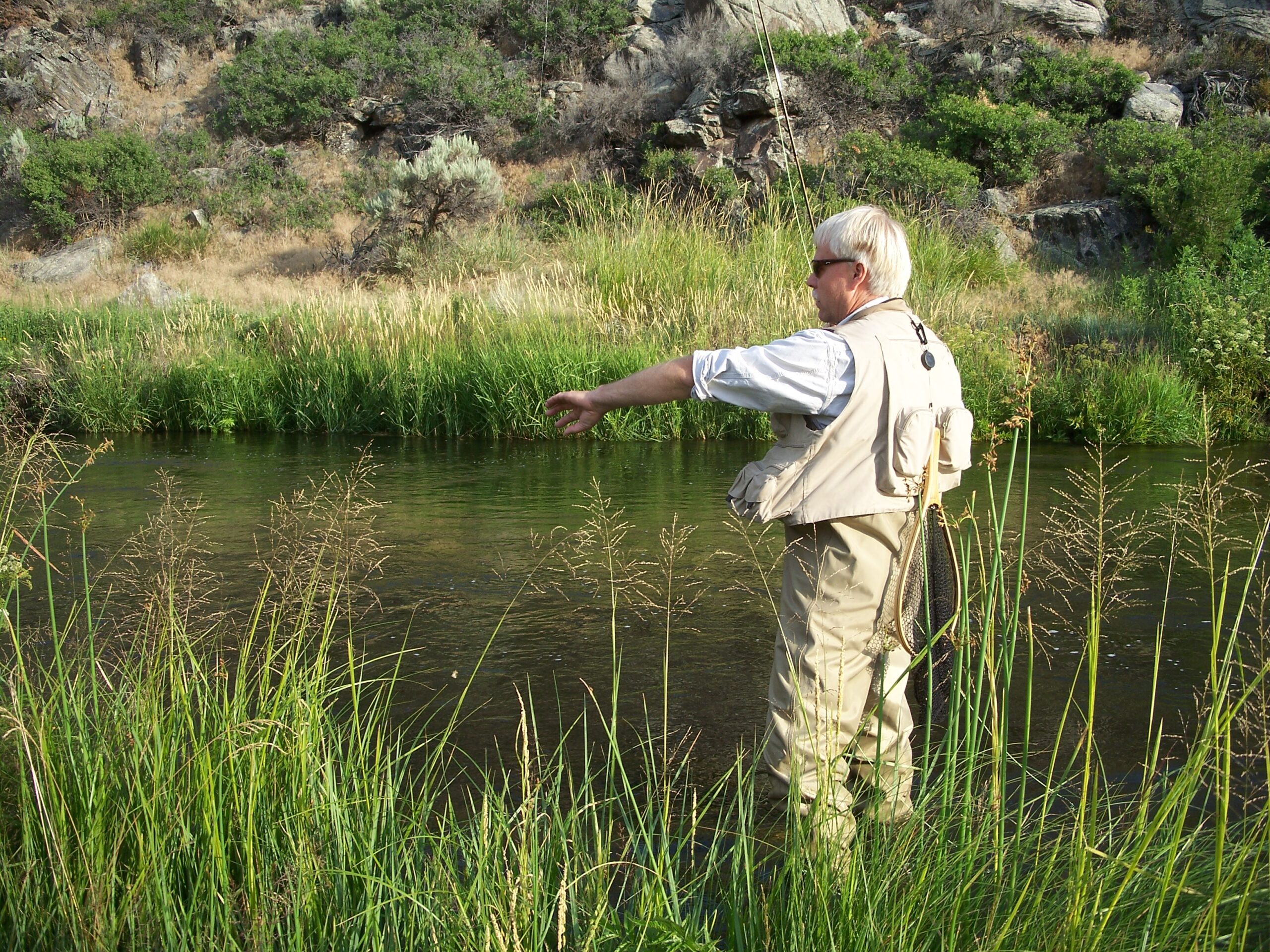Trout hunting season is on! Hunting trout requires a certain strategy, skills, and tackle.
Seeing is believing when trout hunting. Successful Trout Hunters need great optics. Don’t get cheap when buying a pair of polaroid fishing glasses. Get a real pair of quality optics that have been fitted to your head and eyes. Everyone’s face and eye location are unique. Eye size, spacing, and shape are different. Get a pair of glasses that fit your face.
Polaroid lenses come in different colors. My favorite lens colors are amber and yellow. These colors enhance detail and work well in low light. If you are on a lake or fishing in full sun, consider blue or green lenses. Some glasses come with a selection of lens colors in the same holder. This allows you to change colors as needed.
Glasses that are larger will protect your eyes from hooks, bugs, and injury. Glass lenses are heavier but offer better protection. Pair up your glasses with a cord that allows you to hang the glasses from your neck. You want to avoid scratching or dropping your glasses. Clean lenses and frames often with soap and water.
You will see more fish, strikes, and structure with better eyewear. Now that you can see what is going on, you can hunt them better.
Camo clothing is important when hunting trout. Wear clothing that blends in with your background. Blue is a good color since it matches the sky. Fish can’t see color, but brighter colors reflect lighter that the fish can see. Stalk the fish slowly and approach from downstream. Knee pads allow you to get lower when getting close. Long wading pants dry quickly and protect your legs from scratches and bites.
Hats are a must. A wide brim hat protects your eyes and skin. A baseball cap fits snuggly and stays on your head better in the wind. A cowboy hat does offer style and sun protection. Remember that camo idea when wearing our hat. Good wading shoes will keep you upright.
Hunt the shallows with hoppers. Trout will feed in shallow rifles and look for hoppers. The riffle water adds camo from predatory birds. Shallow rifles also mean less work for fish to feed. Moving water brings more food opportunities to eat. Move upstream and shotgun the hoppers. Most strikes happen withing 5 seconds, Mend the line for a smooth drift and be ready to strike.
Sharpen the hook and dress the dry fly properly with a quality flotant. When you catch a fish, wash off the fly and false cast a few times. Now place in a desiccant powder to remove any water. Now cast away. Avoid making long casts. Stalk and get closer. Line that ends up stripped and laying at your feet will get stepped on and damaged. Take shorter casts and search for trout.
Hoppers are great for structure, shorelines, and moving water. Beetles and ants are better for slower water and eddies. Deep pools are a perfect place to fish your terrestrial deeper. Add a sinker and nymph fish your hoppers. You will be surprised at what you dredge up from the deep.
Approach each stretch of water in phases. Fish close to you first, then work outward. Shorelines are a good place to begin. Look for trout before you cast. If you see the fish, cast the fly a few feet upstream.
Hoppers made of cork or hair tend to be heavier than foam. That means that they make a louder, more realistic plop when they hit the water. Fish often react to the sound. Strikes can be explosive.
If you want to use a dropper below your hopper, tie a short tippet to the hopper’s hook bend. Rarely do I make my dropper more than 12 inches long. This reduces tangles and helps get more hooksets. Use a small, size 14-16 nymph. Lightening bugs, Prince Nymphs, and caddis nymphs make good choices.
A longer fly rod will make for quicker hooksets and more accurate casting. Try a 5-6 weight, 9-foot rod for most scenarios. The longer rod will also help you land the fish quicker. This will reduce stress on the fish when released.
Hunt for the big ones!
Montana Grant



